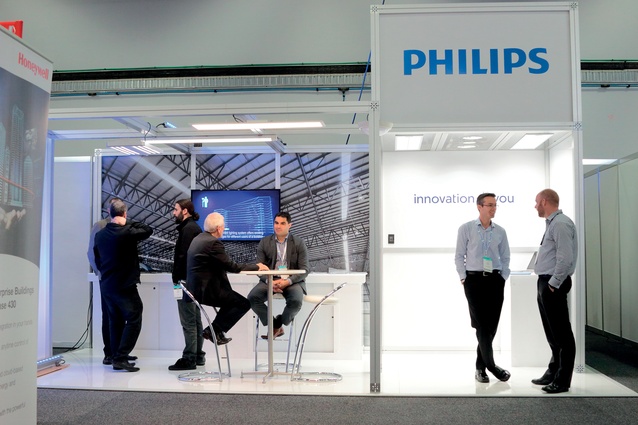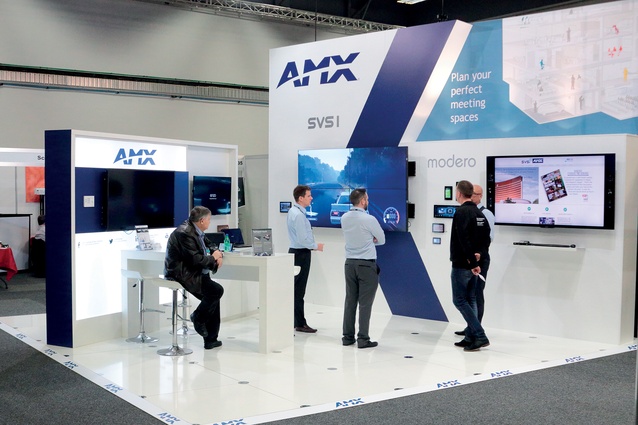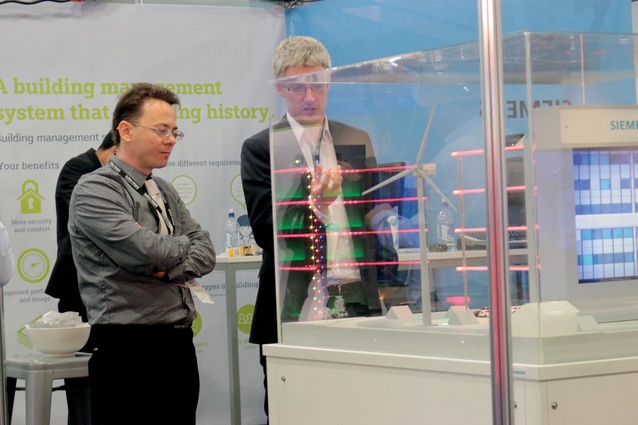Making buildings smarter and safer: the Facilities Integrate trade show
Those who attended New Zealand’s first Facilities Integrate trade show could be forgiven for thinking they’d stumbled into a technology symposium. Automation and digitalisation were key themes of this event, which was aimed at architects, building operators, engineers, service contractors, facility managers, installers, integrators, property developers, system designers and other professionals.
Dozens of industry-leading exhibitors were present, and a full schedule of seminars and workshops, networking opportunities and world-class speakers was on offer. Interior spent some time at the event. These are a few highlights:
Connected buildings at work
“The internet of everything has arrived,” says Michael Brookes, director of marketing and strategy at Honeywell Building Solutions.
According to Brookes, we have arrived at a place in the history of humankind where we have the opportunity to work at never-before-seen levels of efficiency. Adopting new technologies, it is now possible to have your wearable device speak to your workplace about your arrival in the building. It will then prepare your office – unless you are working from a hot desk – and have your meeting room ready, with lighting and heating or air conditioning.
This means the office need cater only for those who are present, so hot desks can be allocated to staff that need to work together in any given day, and meeting rooms prepared near those desks if needed. “Business people are being asked to do more with less,” said Brookes, “so we need to think differently to gain business opportunities from this kind of technology.”
Facilities management and integration in the design process
Even the most well-designed building has problems from someone’s standpoint – and, according to the panel in this discussion, the key to preventing these problems is consultation with everyone who will be using the building.
Facilities Management (FM) is a relatively new industry in New Zealand, says Mark Sinclair of FM Concepts, and not all companies have a dedicated FM manager. He also commented that designers could be intimidating so, sometimes, it takes backbone to stand up to them.
Principal of Jasmax Richard Harris defended the architect’s standpoint by talking about the company’s briefing processes, during which Jasmax likes to have “everyone from everything in the room at the start of the process”.
Glen Gordon of ToTal Property Services commented that integrating cost and environmental savings into an office building could be as simple as opting for day cleaning services. Recycling also needs to be factored into a building’s design.
Charles O’Donnell, independent security consultant, claims engineering companies are rarely exposed to the operational systems of the building’s tenants before a new build – and that security issues are almost always the fault of the building’s design.
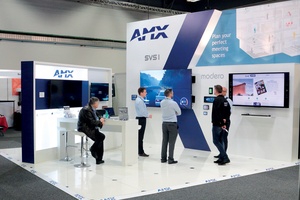
Facilities management consultant Martin Leitch concluded by saying that it would be helpful if companies thought of buildings as assets rather than overheads. “If they are assets, invest in them,” he said.
Maximising your meeting rooms
According to Richard Nagle, national sales manager at AMX, one in five meetings runs overtime because of technological issues – and time, as we know, is money. To avoid these issues, Richard recommends implementing a network-based control system that is standardised across the board and embraces AV/IT convergence.
Another great time and money waster is meeting rooms that go unused. To avoid this, Richard suggests using an RMS server that integrates with a third-party application such as Google Calendar, so that users don’t have to cancel their bookings manually when meetings are called off or rescheduled.
The technology contained inside meeting rooms can be expensive and is not always needed. With this RMS server, it can be possible to invite the people and the technology you need at a meeting. New technology for meeting rooms includes touch panels that beep for one minute before a booked meeting.
If no one touches the panel to stop the beeping, the room shuts down and is able to be rebooked. The same happens when the meeting is scheduled to finish, to encourage meetings to run on time. For large companies, flight boards can be installed, which tell the user where and when a meeting is being held at a glance.
In this way, the use of meeting rooms can be monitored and a room’s use changed, for example to a flexible workstation, if appropriate.
Connected lighting for offices and power over ethernet
Lighting has evolved and continues to evolve beyond the dimmer, towards smart technology that knows who is in the building and changes accordingly, says Simon Willis, engineering manager at Philips Lighting NZ. He shared his experiences working with the University of Otago to link four distant buildings together with an Envision Gateway Ethernet connection.
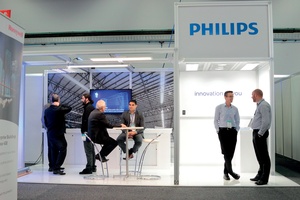
The result was a single piece of software that could tell the building manager whether the system was working properly and whether any ballasts were broken and where they were, thus keeping a building running well with less time and money expended.
Philips Lighting’s marketing manager David Procter shared his views on how the workplace is changing to be more mobile, so lighting infrastructure needs to change too. He talked about the use of heat mapping technology to maximize efficiency of office spaces and change lighting plans accordingly.
For hot desk users, it can be possible to use a smartphone loaded with a specially downloaded app, pointed towards a luminaire, to take control of the lighting in a workspace.
Is anyone paying attention? Analysing a building’s performance automatically
Building Management Systems (BMS) are nothing new. Usually, these amalgamations of software and hardware are configured in a hierarchical manner; the system controls and monitors mechanical and electrical equipment, such as ventilation, lighting, power systems, fire systems and security, in real time.
But, according to Matthew Walker of Direct Control, comprehensive facilities management can, and should, go much further. Continuous, automated analysis of a building’s historical performance data in the medium to long term is the next logical step. Collating the data coming from these various systems and being able to create easy-to-understand graphic summaries will enable facilities managers to recognise problems that might have been hidden.
For example, a typical BMS system will sound an alert if the temperature in a given space moves above or below a pre-set parameter. Analytics would take this a step further and enable the facilities manager to notice easily if individual AHUs in that space were both heating and cooling or if one VAV unit was running below expected performance.
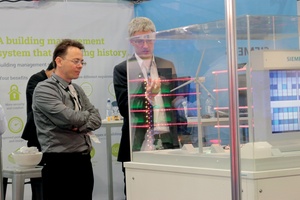
Walker says this continuous data collection and analysis is a valuable tool in building management as it allows a more holistic measurement of a building’s performance and can help facilities managers identify and implement the necessary adjustments to achieve energy-efficiency goals, prioritise maintenance tasks, and work towards a reduction in annual utility and maintenance costs.
Getting the most out of smart buildings
Over the past decade, ever-evolving technology has had a profound influence on the way we exchange information; this, in turn, has impacted the way we interact with each other and our day-to-day behaviour in the workplace. No longer confined to desks and tethered by the length of the telephone cord, today’s employee is used to operating on the move; it’s time for a fresh assessment of how systems across entire buildings are responding to these changes, says Simon Baxter of Spark Digital.
Portable technology (smartphones, tablets) is the norm, so having an activity-based work environment that allows staff to work with colleagues and external groups, wherever they are, is essential. Along with facilitating collaboration and communication, smart buildings can help promote more efficient ways of working by integrating technology into mundane tasks: for example, remotely booking conference rooms and other meeting areas; or having the ability to automatically divert an employee’s calls to any phone by keying in an individual passcode.

